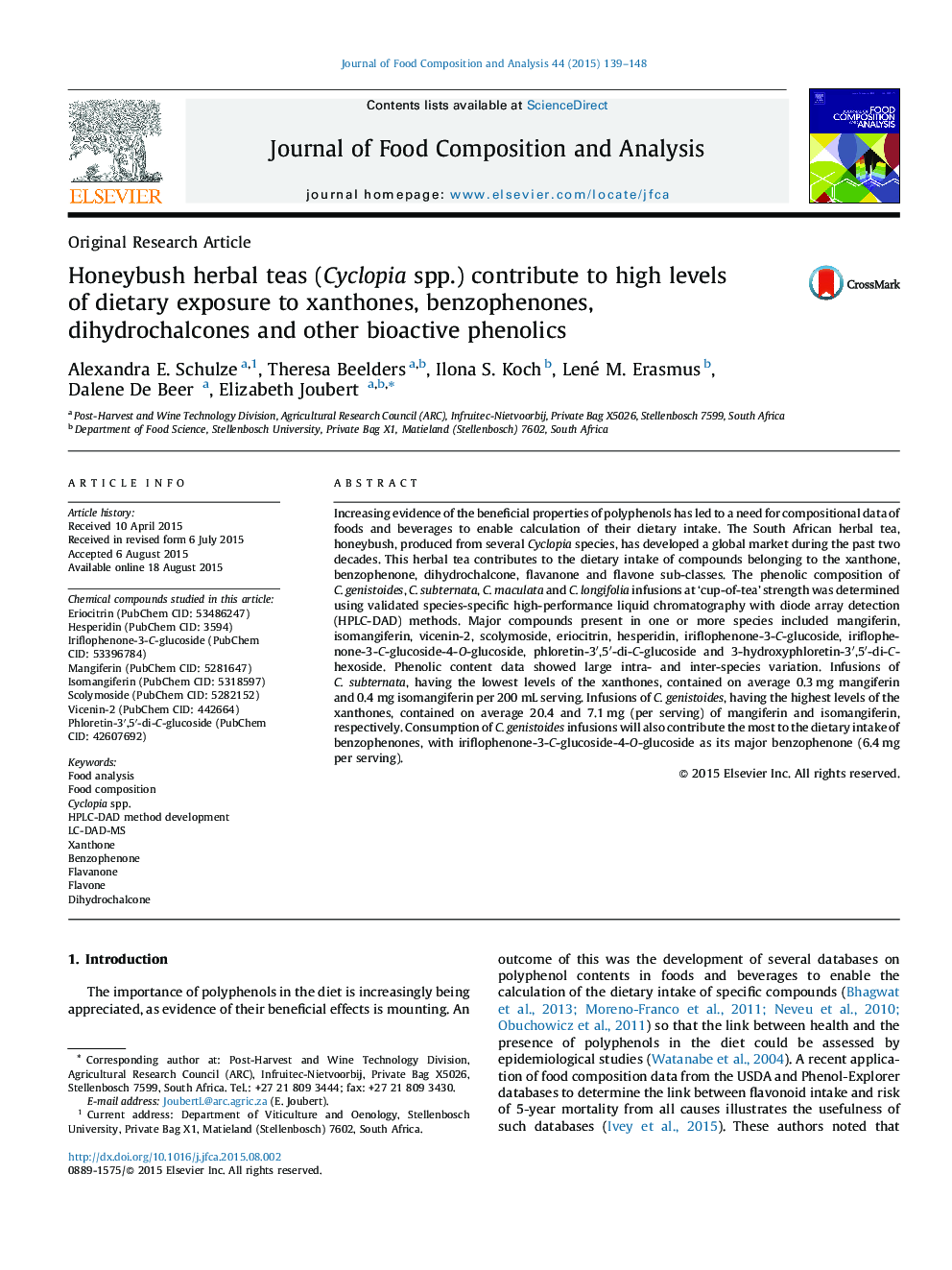| Article ID | Journal | Published Year | Pages | File Type |
|---|---|---|---|---|
| 7620377 | Journal of Food Composition and Analysis | 2015 | 10 Pages |
Abstract
Increasing evidence of the beneficial properties of polyphenols has led to a need for compositional data of foods and beverages to enable calculation of their dietary intake. The South African herbal tea, honeybush, produced from several Cyclopia species, has developed a global market during the past two decades. This herbal tea contributes to the dietary intake of compounds belonging to the xanthone, benzophenone, dihydrochalcone, flavanone and flavone sub-classes. The phenolic composition of C. genistoides, C. subternata, C. maculata and C. longifolia infusions at 'cup-of-tea' strength was determined using validated species-specific high-performance liquid chromatography with diode array detection (HPLC-DAD) methods. Major compounds present in one or more species included mangiferin, isomangiferin, vicenin-2, scolymoside, eriocitrin, hesperidin, iriflophenone-3-C-glucoside, iriflophenone-3-C-glucoside-4-O-glucoside, phloretin-3â²,5â²-di-C-glucoside and 3-hydroxyphloretin-3â²,5â²-di-C-hexoside. Phenolic content data showed large intra- and inter-species variation. Infusions of C. subternata, having the lowest levels of the xanthones, contained on average 0.3Â mg mangiferin and 0.4Â mg isomangiferin per 200Â mL serving. Infusions of C. genistoides, having the highest levels of the xanthones, contained on average 20.4 and 7.1Â mg (per serving) of mangiferin and isomangiferin, respectively. Consumption of C. genistoides infusions will also contribute the most to the dietary intake of benzophenones, with iriflophenone-3-C-glucoside-4-O-glucoside as its major benzophenone (6.4Â mg per serving).
Keywords
Related Topics
Physical Sciences and Engineering
Chemistry
Analytical Chemistry
Authors
Alexandra E. Schulze, Theresa Beelders, Ilona S. Koch, Lené M. Erasmus, Dalene De Beer, Elizabeth Joubert,
